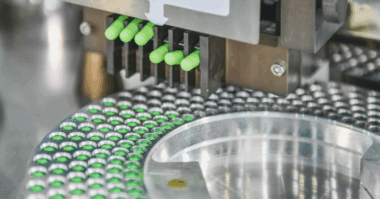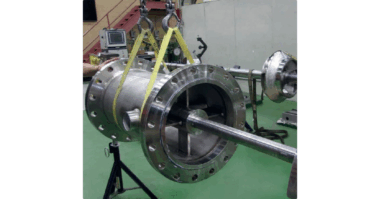When Billy Branch, maintenance supervisor of the Moores Bridges Water Treatment Plant in Norfolk, Virginia found that the hydraulic diaphragm metering pumps the plant used for producing and pumping chloramine were failing, he solved the problem with seepex progressive cavity pumps. In the city of Norfolk, more than 850,000 people get their water from 8 reservoirs and additional water sources include the Blackwater and Nottoway Rivers, as well as four deep wells located in Suffolk. Approximately 72 million gallons of water a day are treated as pumps add sodium hypochlorite into a contact chlorine basin and then into pipes going to the filters.
Several issues stood in the way of the needed level of performance to pump sodium hypochlorite, or “NaOCl” in the water treatment facility. The hydraulic diaphragm pumps were having major performance issues and failing frequently. By 2009, of the original 15 hydraulic pumps, only 5 were in working condition, however, consistently at least one or two pumps were down and in need of extremely labor intensive repair. By design, diaphragm pumps are very complex and prone to breakdown. There are many parts to this type of pump, and repair is time consuming and difficult. Required pulsation dampeners shook the pipes, causing leaks and vapor lock as well as structural damage. Repair kits cost about $2,200 to $2,500 each and Billy had to purchase one every 6 months at the rate his pumps were failing. Frequent, complicated, costly, and labor intensive repairs, wasting up to 30 hours of production time a week, were causing the plant frustrations. The Moors Bridges Plant concluded that diaphragm pumps were much too costly, and they decided they must go in a different direction.
The Solution
After unsuccessful testing of a hose pump, Billy ended up replacing all of the hypochlorite diaphragm pumps with seepex Progressive Cavity Pumps. Stuart Taylor, a sales engineer for the seepex distributor, Tencarva Machinery in Chesapeake, Virginia, recommended the progressive cavity metering pumps manufactured by seepex. “The seepex titanium fitted MD pumps are a tight little package,” he explained. “The pump has long life and the parts are easily changed and reasonably priced. You can save time and money using these pumps.” After installing the pump, operators manually adjusted the feed rate by watching chlorine levels rise and fall. The pump, protected from run-dry and over pressure, operated in manual mode for the trial, pumping against high pressures without pulsation or vapor lock.
After Branch’s free trial run of the titanium MD 05-6LT, the plant was so impressed by the results that they committed to switching their old pumps with the seepex MD series of PC pumps. The pumps have a functional flow range of 0.05 to 2.00 USGPM. The pumps have a speed range of 36 to 284 rpm, have a pressure rating of 80 psig and are fitted with ½ Hp geared motors. The suction casing and the pressure branch are made of High-density Polyethylene (HDPE), which is corrosion resistant to NaOCl. The pumps internal parts were also carefully selected to withstand the chemical. The stator is made of ethylene propylene diene monomer (EPDM) and the rotor is made of Titanium.
Coincidentally, while ordering the new pumps, their old pumps suffered a colossal breakdown for the last time. Branch called Taylor, and requested to purchase the trial pump immediately and have it put in place permanently. Since then, the city of Norfolk has bought 4 more seepex pumps with titanium and ethylene propylene diene monomer wetted parts to replace a total of 15 diaphragm pumps. At least 2 of the seepex pumps are running at any given time, with 3 on standby. The pumps are alternated every 10 days. The pumps aid with operational reliability, increase service life with optimum pump speeds, and ensure precise metered pumping of the NaOCl. They have eliminated the need for pulsation dampeners altogether. The gases present when pumping NaOCl do not affect the performance of a seepex pump, and it is now easier to regulate the feed of NaOCl over the entire dosing range.
The Benefit
The seepex hypochlorite pump turned out to be superior to previously used models because the pumps are reliable, service friendly, and sound, which means less downtime due to repairs. The pumps offer significant cost savings, up to $5,000 a year in repairs alone. The pumps can operate against high pressures without pulsation, will not vapor lock, and are protected from dry run and overpressure to maximize the lifecycle costs of the pump.
After switching to seepex Progressive Cavity Pumps for NaOCl pumping, Branch explored the possibility of using the pumps as a replacement for aqueous ammonia dosing too after lost prime would cause inaccurate dosing. Four MD 012-12 stainless steel pumps with a rate of 30 gallons per hour and four MD 025-6L stainless steel pumps with a rate of 15 gallons per hour were able to integrate into their SCADA system and deliver a precise feed rate while a sensor automatically sets their specific water levels. After successful testing, the plant’s eight original ammonia pumps were replaced with the seepex models.
Billy Branch expressed satisfaction gained by the use of seepex pumps by saying, “We were in a real bind, and the seepex pumps saved us a lot of sleepless nights and maintenance headaches. We went from working on the pumps daily to just changing oil once a year and not having to worry about them failing. seepex offered us a simple product that works well. The transition between the old pumps and the seepex model was easy. The cost savings to the people of Norfolk was significant.”
For more information, visit seepex.com



